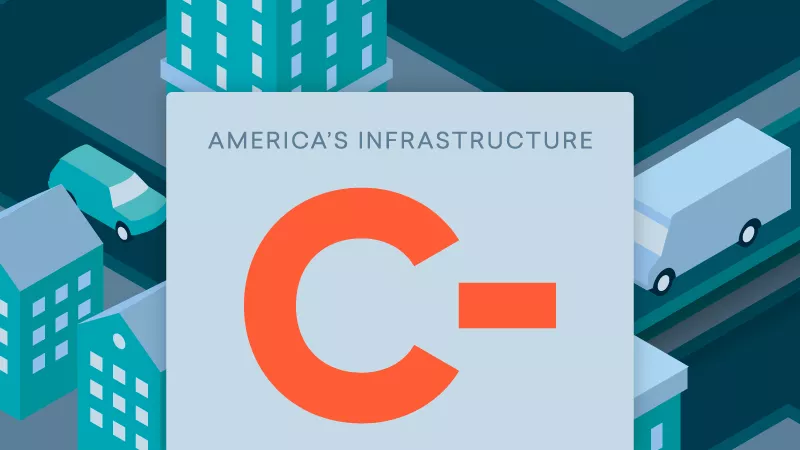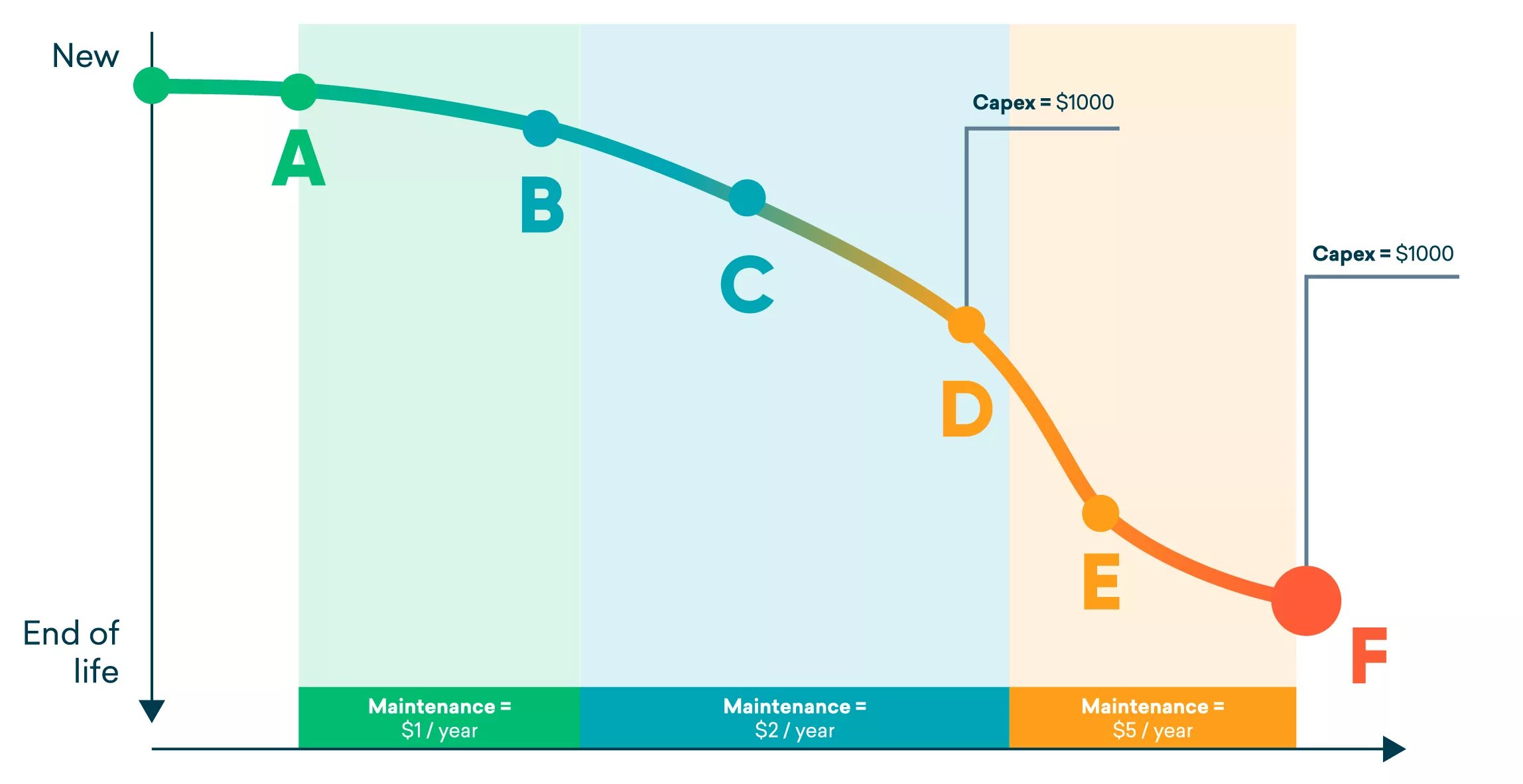The Good News About America’s C- Infrastructure Rating from ASCE

The ASCE report provides hope and a trend in the right direction, particularly in the areas where elected officials and the public and private sector have improved infrastructure policy and supported additional funding. It shows the public sector is listening, and that data-driven strategic asset management is having a positive impact on the overall health of our infrastructure.
How strategic asset management fits in
Strategic Asset Management (SAM) gives guardians of infrastructure – schools, municipalities, water utilities, airports and others – the ability to stretch the dollar further, and more importantly reduce their long-term funding requirement.
Key to addressing the issues highlighted by ASCE is realizing that a grade of C for schools or D for bridges doesn’t mean every school or bridge falls into that grade – it’s simply the average across the entire country.
When infrastructure gets to a D, the rate at which it starts getting eaten up – or ”consumed” – far exceeds the rate at which we can replace those assets, including available budget and constituents’ capacity to pay for the necessary repairs and upgrades. And when more and more assets get into the D-zone, that capacity to pay further decreases, leaving what ASCE calls the infrastructure deficit. Before you realize it, the backlog has become unsustainable – which is the situation the US finds itself in today.

Figure X – as assets enter the ‘red’ zone of grades E and F cost to renew increases
The good news
The US has now recognized this problem – through the ASCE and other thought-leading associations such as the Government Finance Officers Association (GFOA). And the Biden administration is taking strong action by introducing a $2 trillion infrastructure plan last month to help us close the gap once and for all.
The better news
SAM provides a methodology and technology to solve that problem, based on three fundamentals:
- How to improve your grade and reduce backlog – without throwing unlimited funds at the issue
- What to tradeoff when necessary – to optimize spend, improve overall grading and maintain acceptable service to the community
- Ensure stimulus, taxes and levies are best spent – by demonstrating with evidence-based SAM that things are on the path to improve beyond today’s C grade.
Strategic asset management takes a $40 million annual capital works budget for an agency with a D grade and demonstrates how to ensure assets don’t drop to an E within that budget. Or even better, how to use it optimally and improve to a C without spending more money.
How other organizations are raising their grade
Some of these industry-leading agencies already successfully applying SAM to improve infrastructure grading include:
City of Topeka, KS faced the loss of a 0.5-cent retail sales tax which was funding street renewal. Under pressure to demonstrate the impact of sunsetting the tax, Topeka took available data to drive SAM outcomes and show the evidence-based forecast of its removal on pavement condition goals, and how they could maintain an acceptable service grade while spending the same amount of money differently and reduce “end of life” roads backlog by 50% in the long term. Impressively, Topeka was able to achieve all this in just eight weeks, and ultimately ensure the budget preservation.
Read how the City of Topeka used Brightly's capital planning software to achieve and surpass their goals in this success story.
City of Sanford, NC integrated a sewer model and land use plan to chart a clear course through the 2045 planning horizon using SAM. Sanford achieved increased annual rehabilitation/replacement funding, a successful $2 million infrastructure grant application and better alignment with the City’s land use plan.
The SAM outcomes provided visualizations of what-if funding scenarios’ impacts on asset condition to inform trade-offs, as well as the financial and service consequences of deferred maintenance. Sanford can now prioritize projects based on location, urgency and other parameters to make decisions which keep assets at acceptable grade levels and minimize backlog.
Read how Brightly helped the City of Sanford's wastewater team become more mobile and efficient in their success story.
At the City of Wichita, KS, the team has taken great steps applying SAM to managing its $1.25 billion buildings portfolio, coming from the challenging reality of 60% of those assets being 40+ years old. Data from a 2017 condition assessment identified the size of the backlog – which was so large many internal stakeholders struggled to know where to start, and therefore be confident in how much and where to allocate more funding.
Previous ranking and benchmarking data used a primarily financial metric, which while useful did not holistically convey to senior Wichita stakeholders the on-the-ground condition of these assets and the capital planning needs to “keep the lights on."
Through bringing together of engineering and finance with a common goal of preserving the City’s buildings, the team was able to demonstrate prudent fiscal planning. Using objective condition data and return on investment metrics, they presented future scenarios to their leadership team and board, reset proposed strategies and altered funding allocated based on data-driven modeling.
SAM puts the future in the hands of guardians, as these thought-leading agencies are proving today.
By applying and improving data and utilizing the right technology platforms to bring in better financial planning, there’s a very real opportunity to have made five times the incremental change to the ASCE Report Card grading achieved in 2021.



